Asus ROG Strix X299-E Gaming ATX Motherboard Review: 44-Lane CPU Ready
Why you can trust Tom's Hardware
Software & Firmware
Asus' Aura software now controls a variety of things, from onboard lights to LED strips to RGB memory. It's known for its nearly universal support of anything that would connect to its motherboards' RGB interfaces.
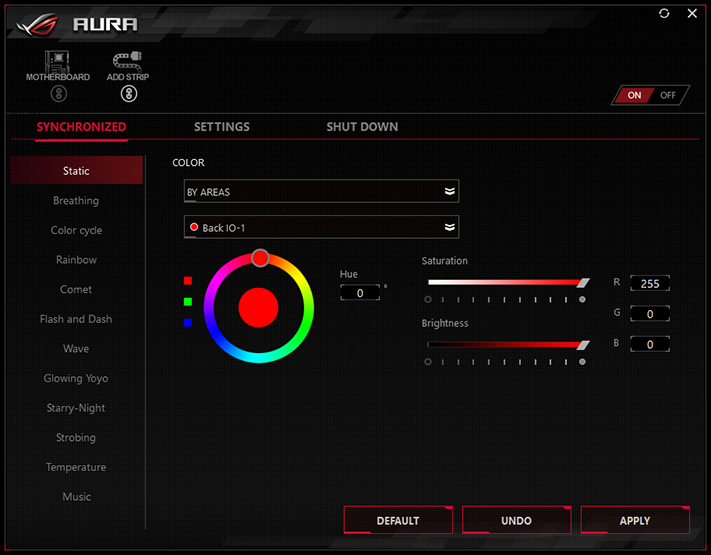

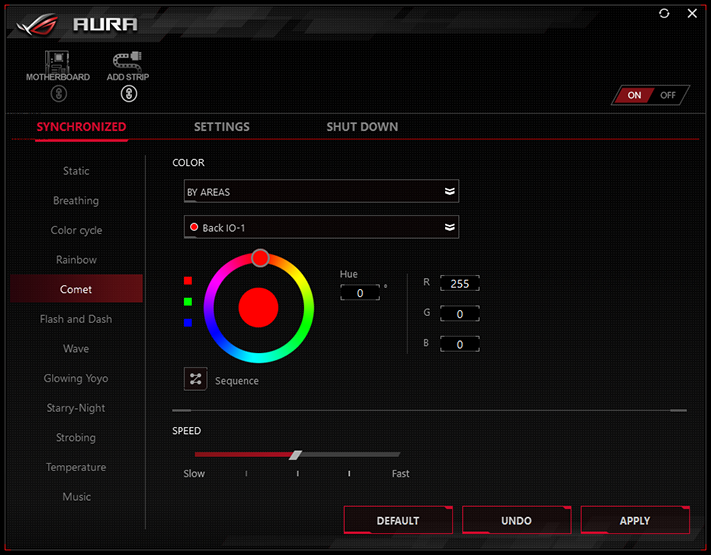
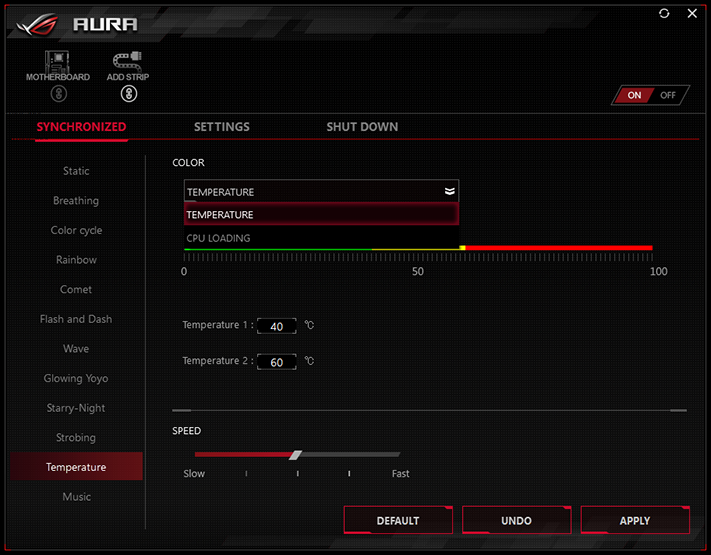
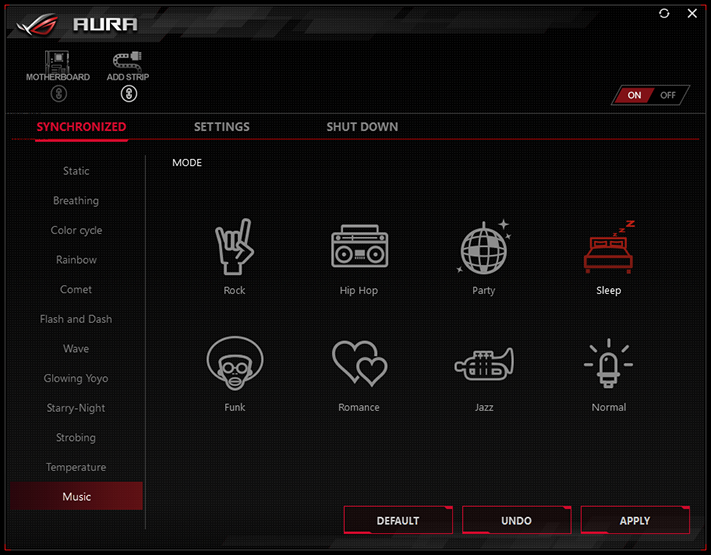
Asus' Sonic Studio 3 modifies the audio output to make things either easier or more enjoyable to hear. It has Smart Volume to help reduce changes in volume level, Voice Clarity to increase the volume of dialogue and virtual surround sound.

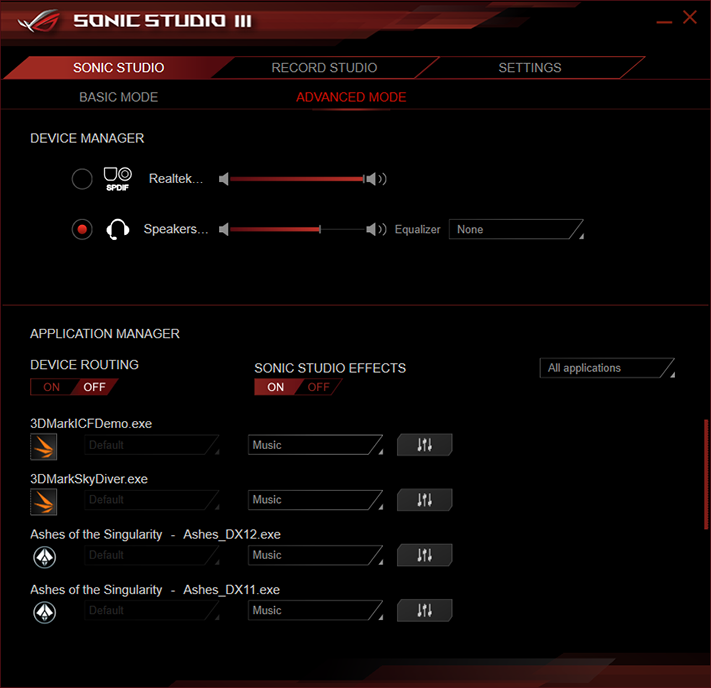
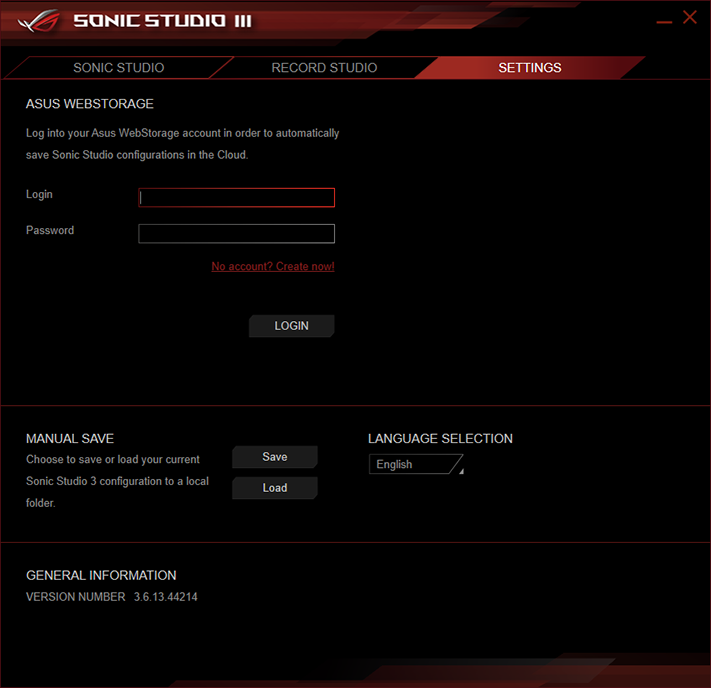
Asus' Sonic Radar 3 adds a video overlay to 3D games that indicates the direction and distance of noises, which is useful in determining the position of moving adversaries.
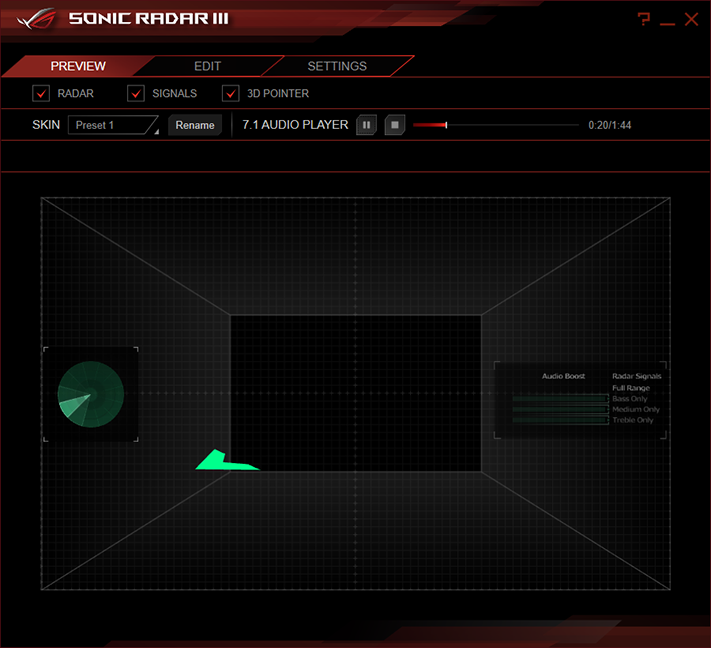
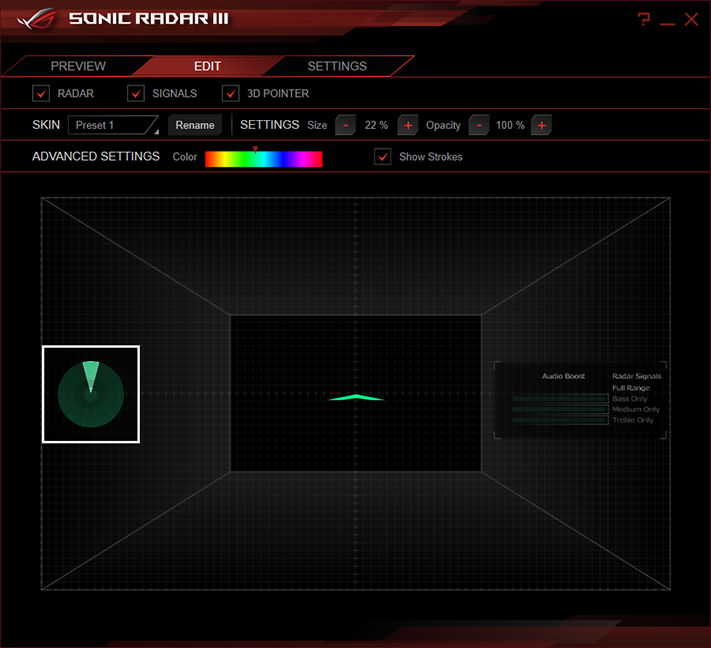
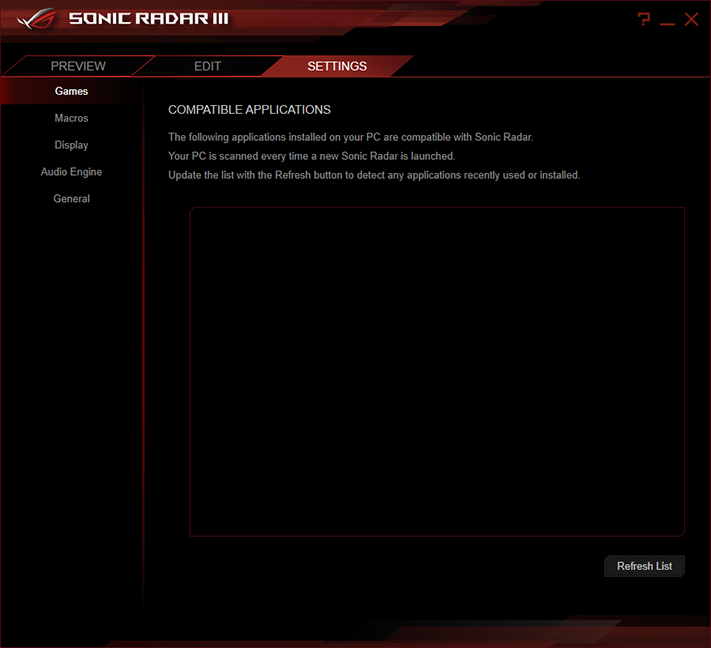




The company's AI Suite 3 comprises its Dual Intelligent Processors 5 manual overclocking, TPU automatic tuning, Turbo App application prioritization, EPU efficiency optimization, Fan Xpert 4 fan tuning, Digi+ VRM CPU voltage regulator controls, PC Cleaner trash utility and a shortcut for its EZ Update application. The bottom bar of its application hosts additional status menus, along with adjustments for its system warning alerts.



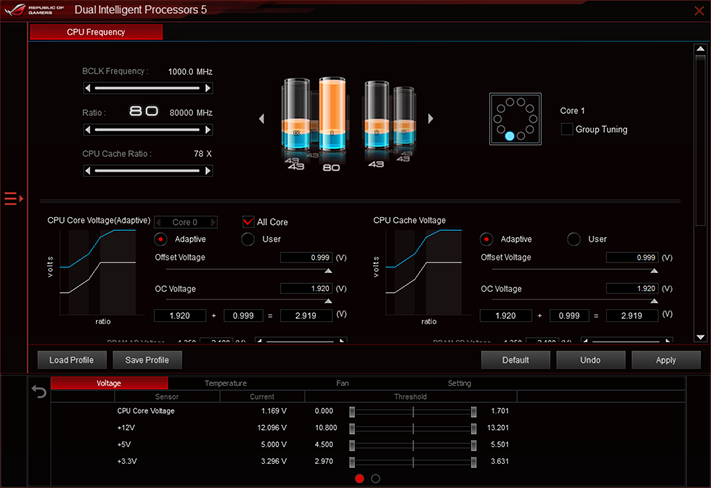

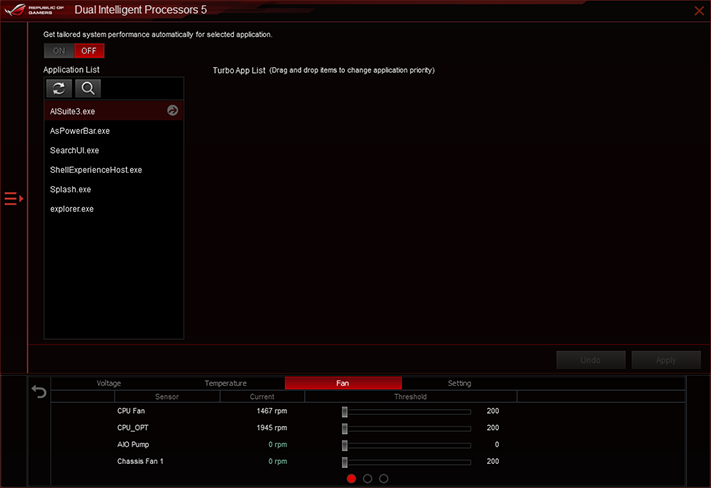
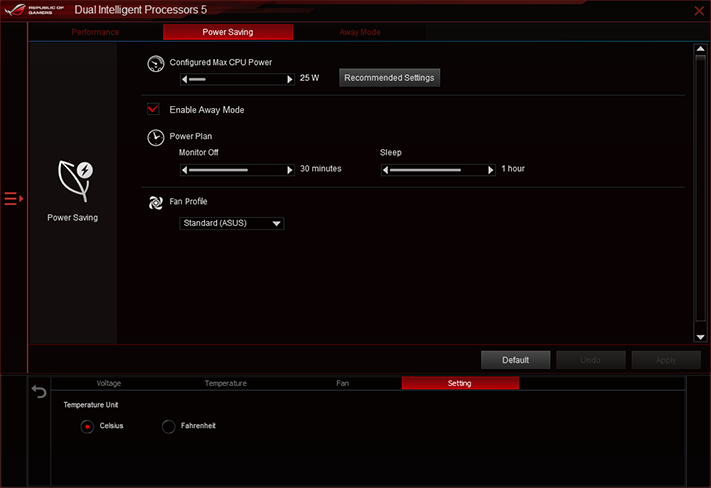
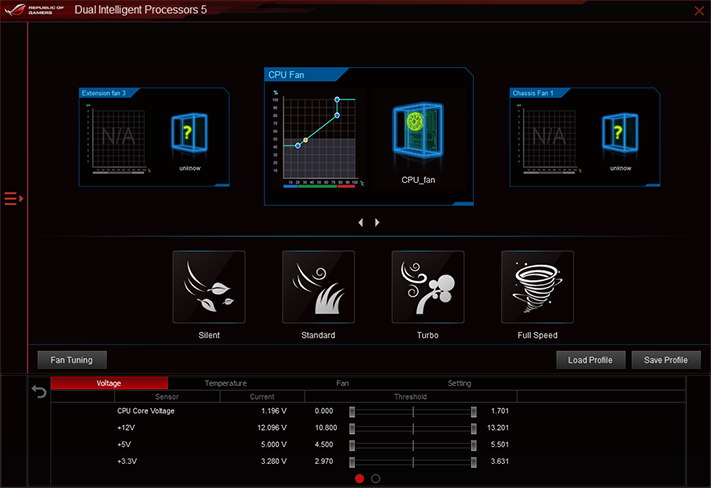
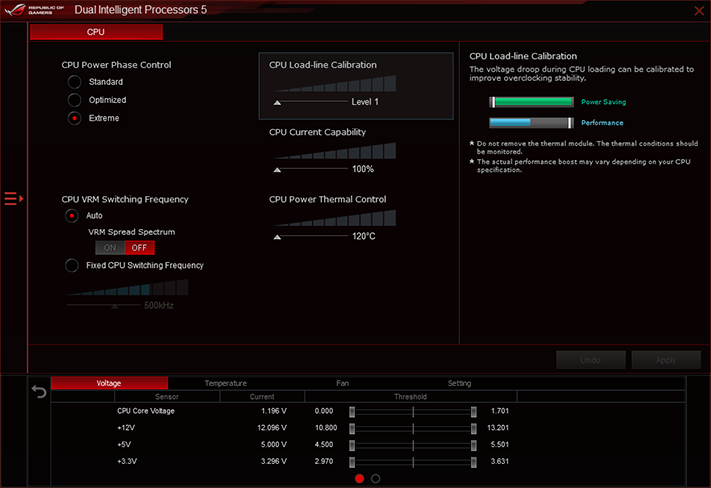
Clicking the highlighted 5-Way Optimization button allows the board to run its full CPU and Fan optimization routine, which produced a 4.3GHz fixed clock on our hardware, along with a variable voltage of 1.17 to 1.24V under heavy loads. Manual tuning options allowed us to reach 4.4GHz at a fixed 1.15V CPU core setting.
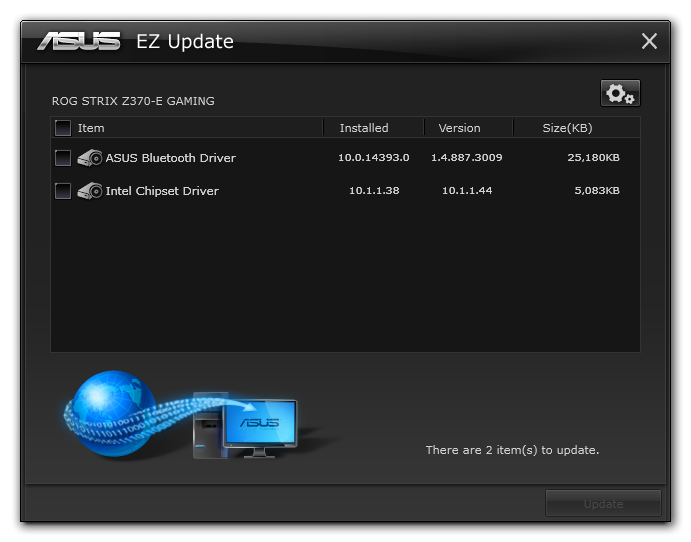

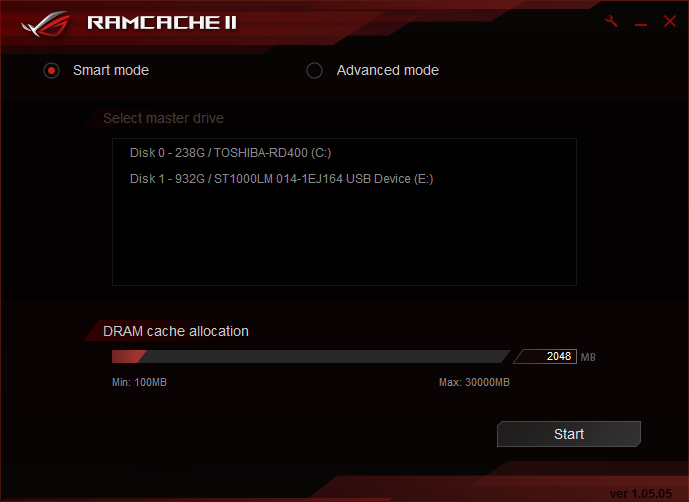
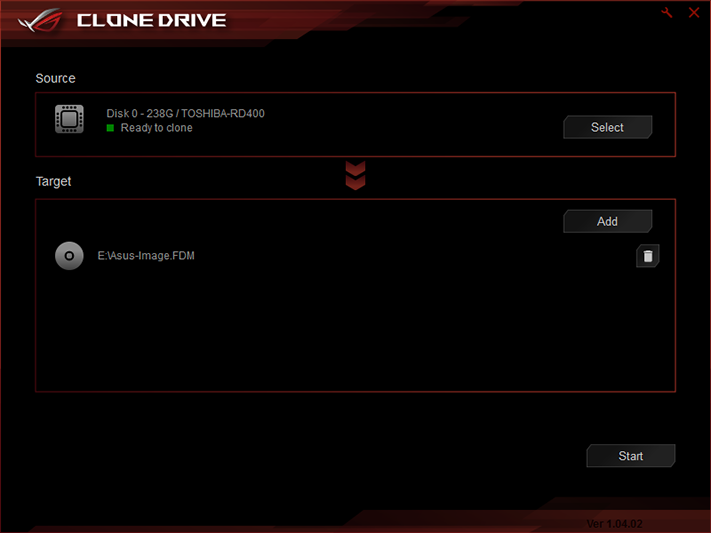
Asus' EZ Update polls its servers for updates to included applications and drivers, GameFirst IV allows network prioritization to put game packets first, Ramcache II sets aside a hidden partition of memory to cache frequently accessed files, and Clone Drive adds drive-imaging to the impressive software mix.
Firmware
Get Tom's Hardware's best news and in-depth reviews, straight to your inbox.
The Strix X299-E Gaming's firmware opens to an Advanced Mode GUI, where the My Favorites menu holds frequently accessed settings and can be reconfigured in a Setup Tree Map activated by a keyboard’s F3 function. We accessed deeper overclocking functions within the Ai Tweaker menu, where we pushed our Core i7-7900X to 4.40 GHz at the low 1.15V setting required to prevent throttling under the AVX-heavy Prime95 small-FFT’s stress test.
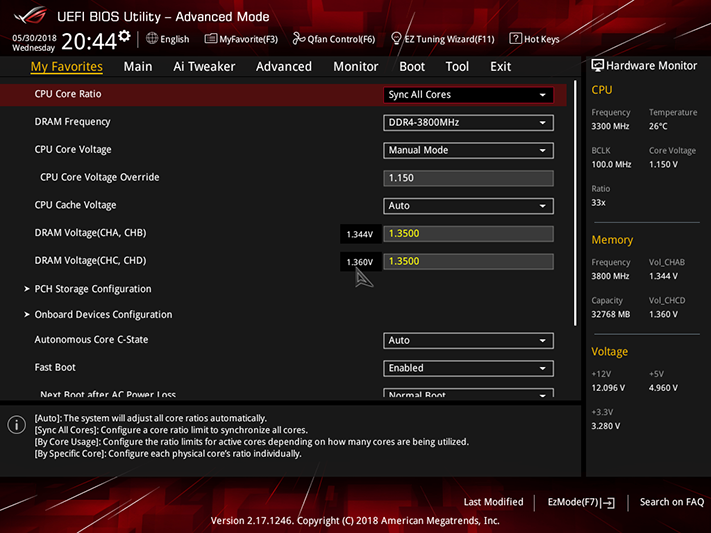
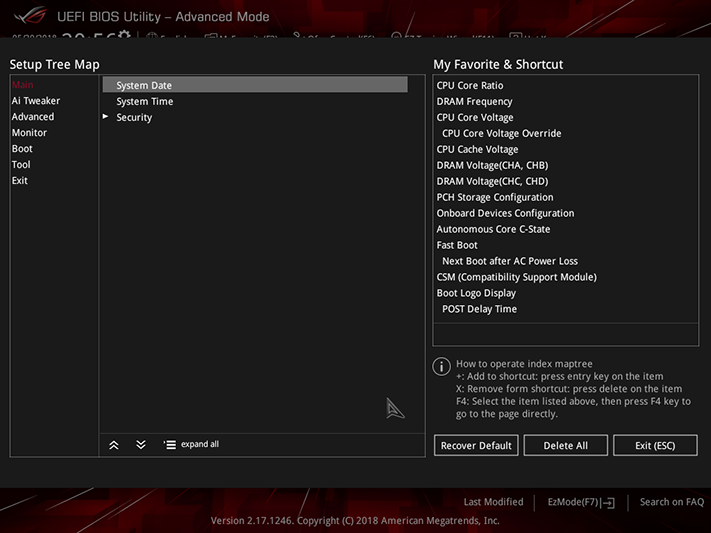
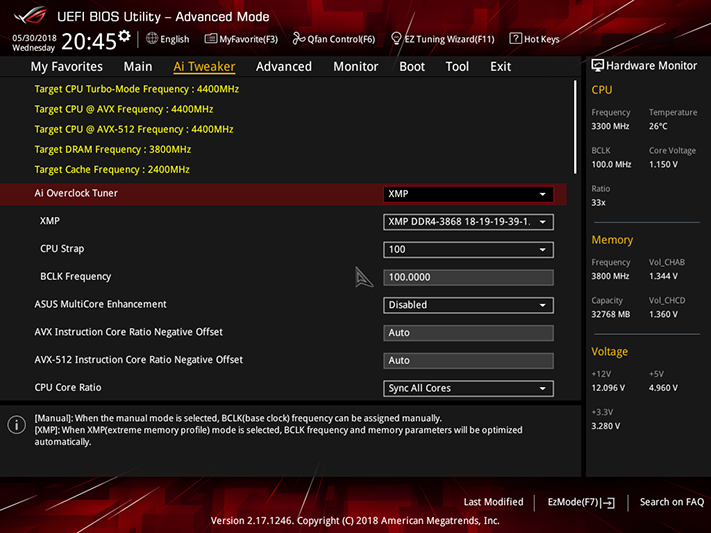

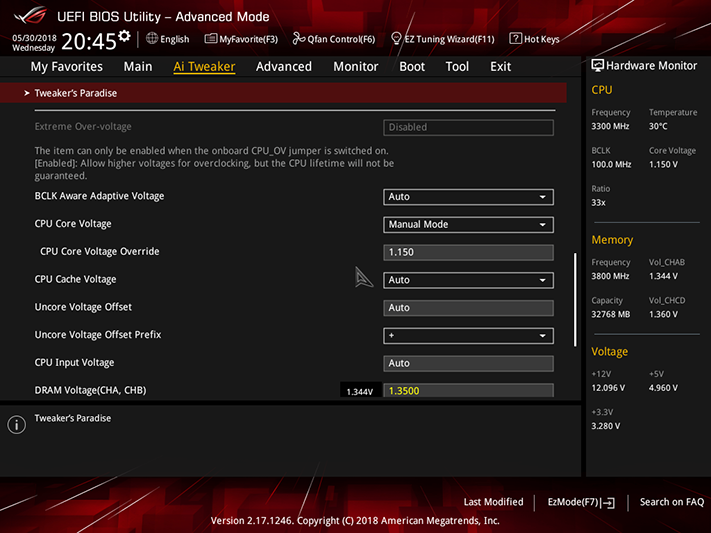

CPU voltage remained consistent under shifting loads using the Level 6 CPU Load-line Calibration setting from the External Digi+ Power Control menu. More surprising was that the DRAM voltage had a maximum variation of +5mV as measured at the DIMM, in an industry where many boards set 15mV or more beyond what the user desires. We have placed a hard cap of 1.355V on DRAM voltage in our overclocking tests to prevent cheating.

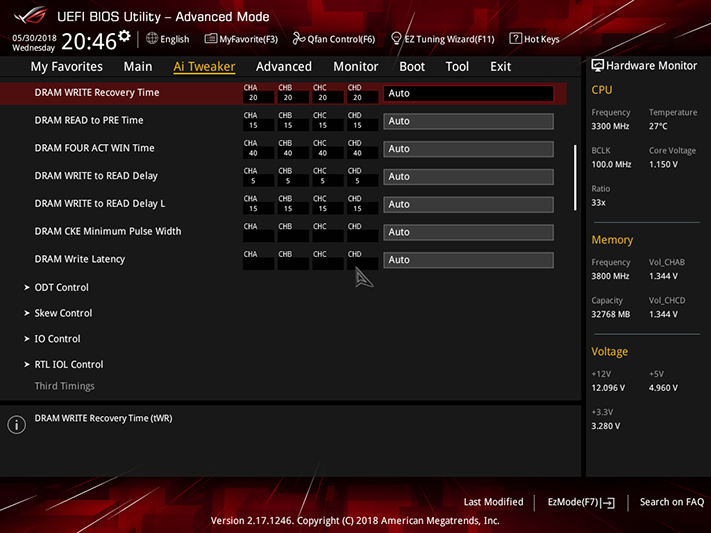
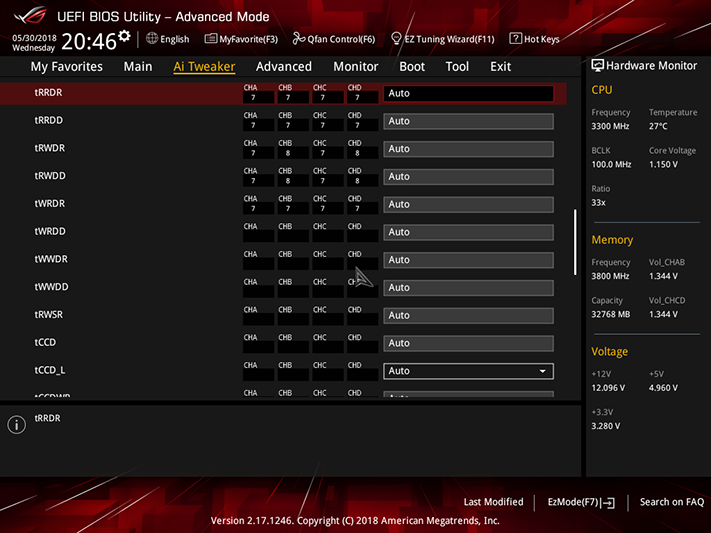
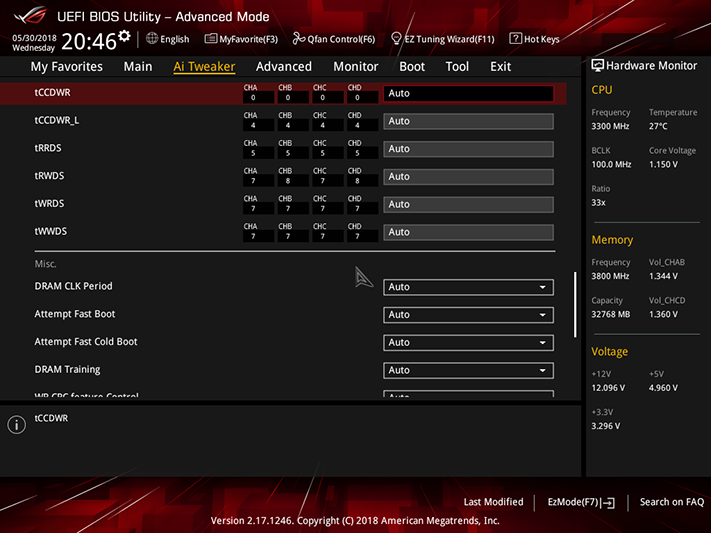

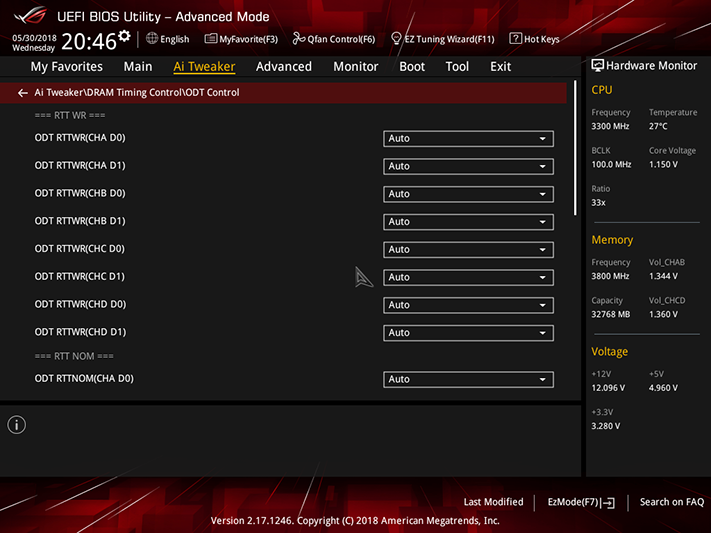



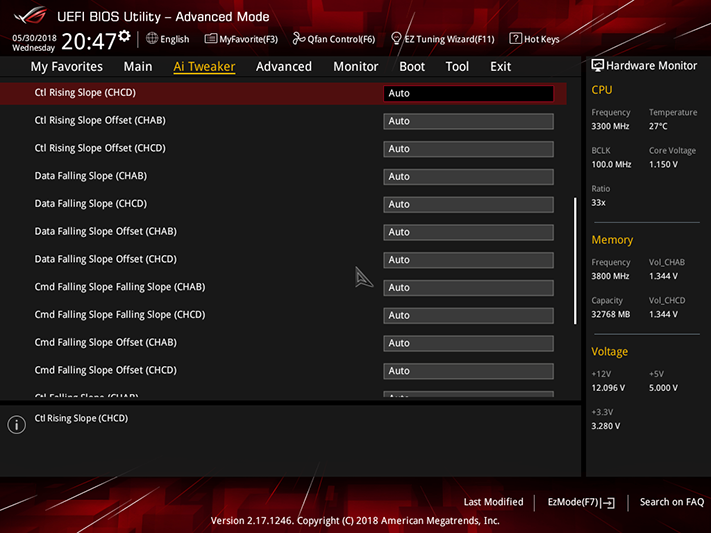


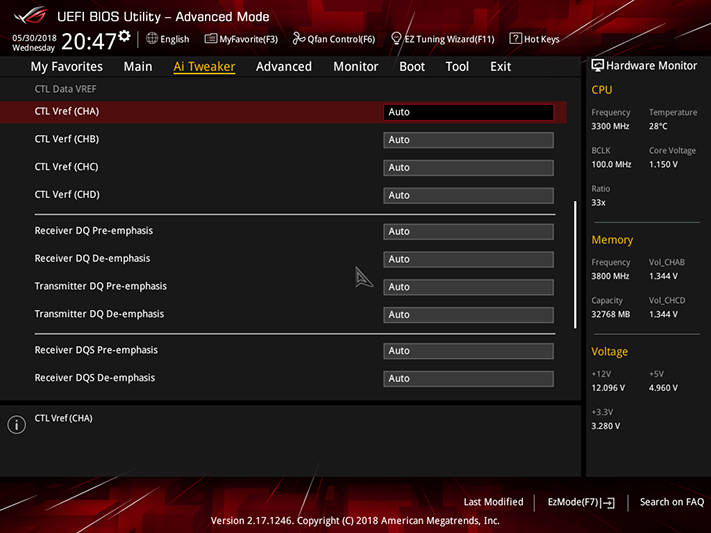
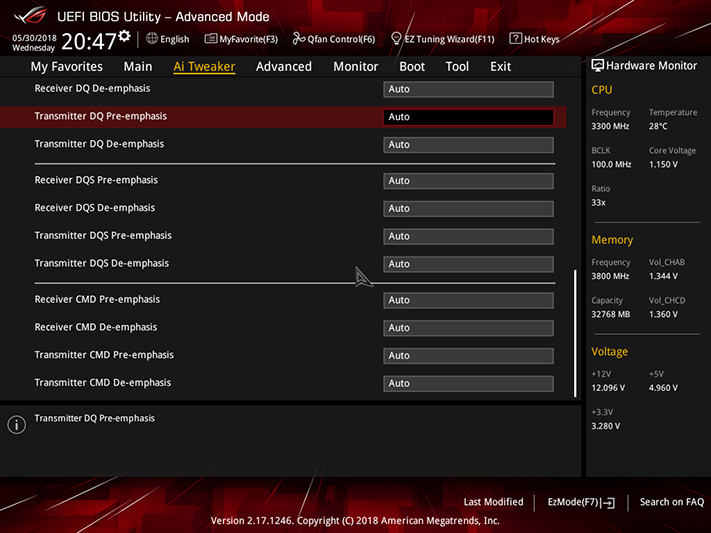
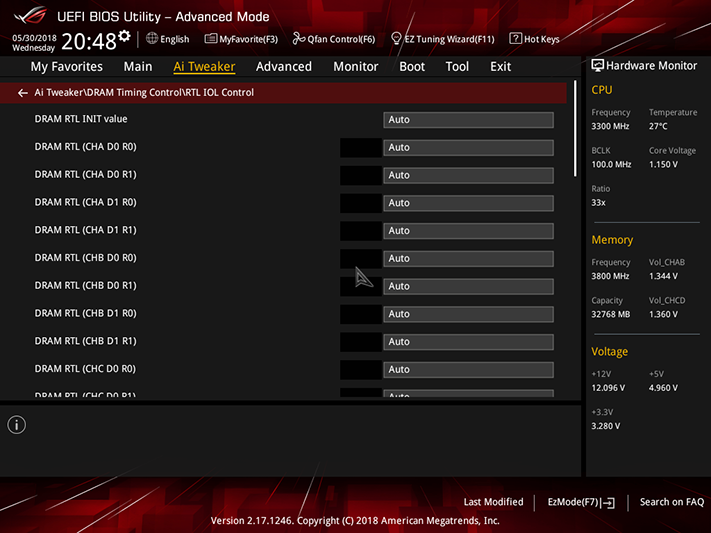

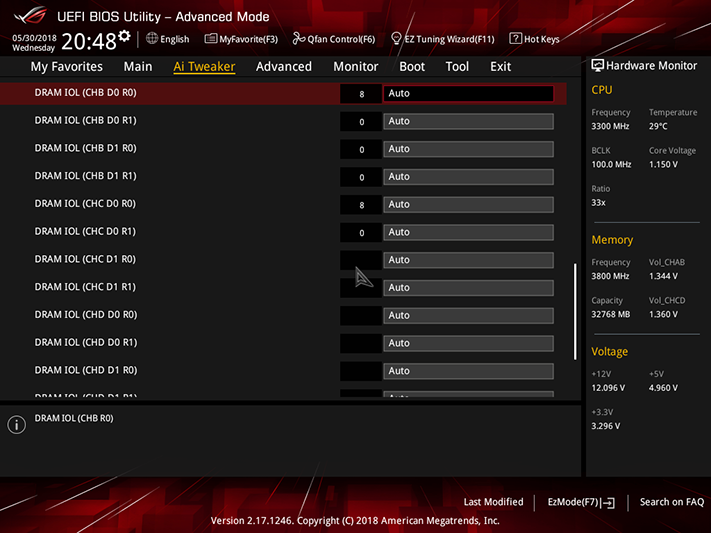
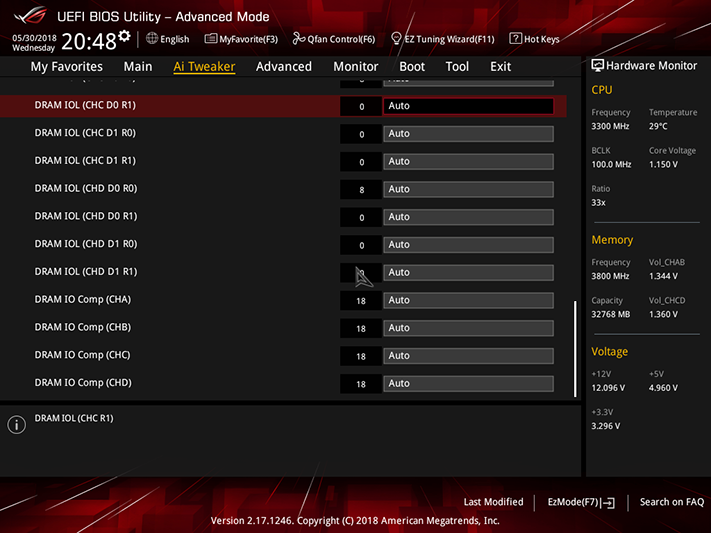
How many DRAM settings does the most advanced overclocker really need? The Strix X299-E Gaming has enough to fill 18 pages of screenshots. Our DDR4-3866 kit reached DDR4-3912 at its XMP-defined timings.

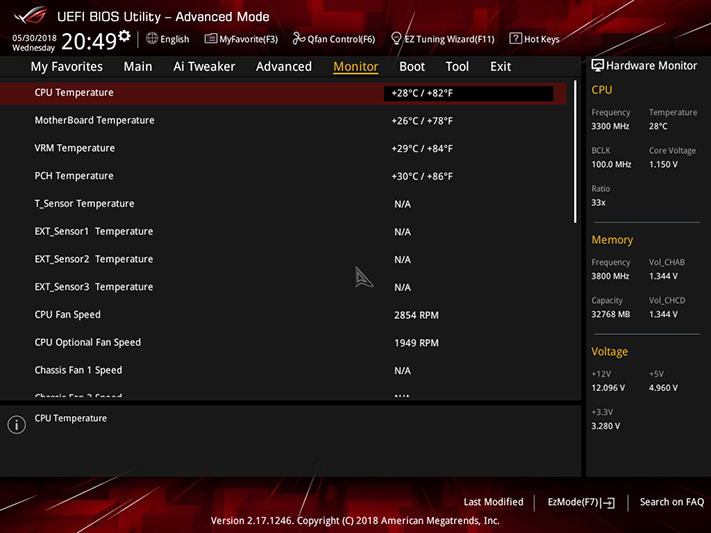
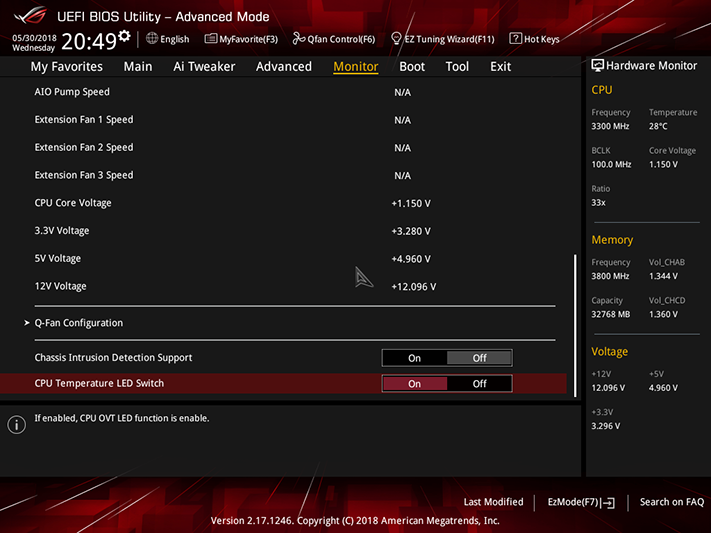
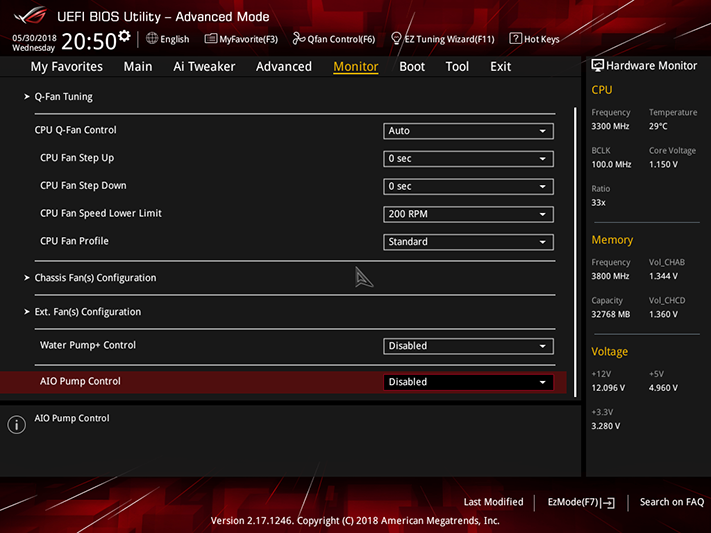

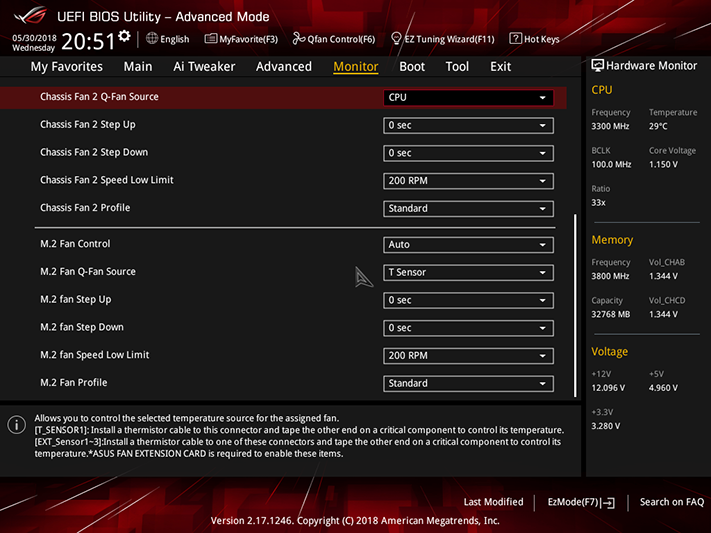


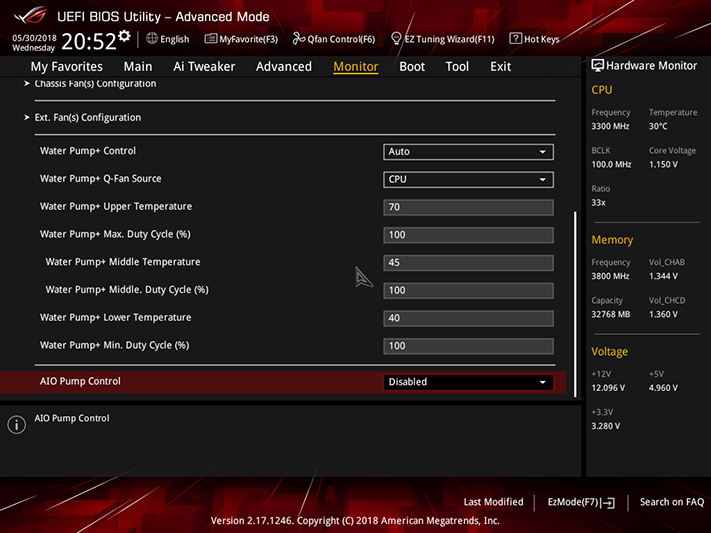
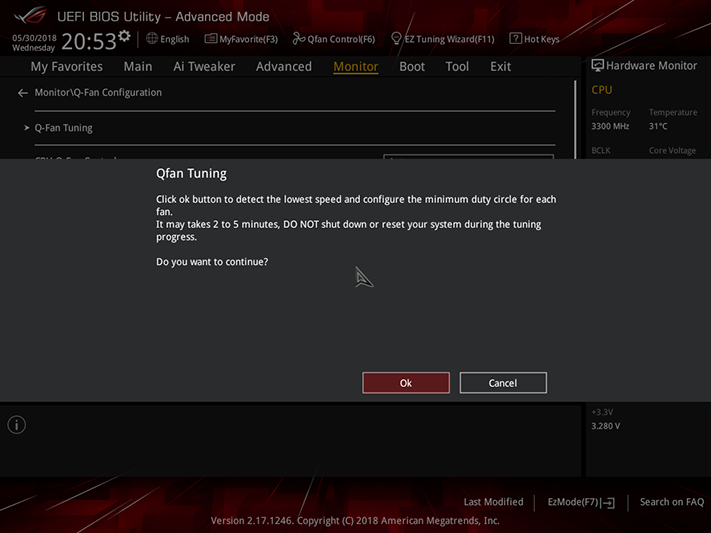

The Strix X299-E Gaming supports both PWM (pulse width modulation) and voltage-based fan control on all seven headers. You can also control three additional headers of an Asus Fan Extension card, should you choose to buy one. The Qfan Tuning option lets the board test every fan to find its minimum operating speed and adjust automatic curves accordingly, but users can also set their own curves mathematically or use the keyboard’s F6 function to access a menu with a three-point graphical mapping interface.
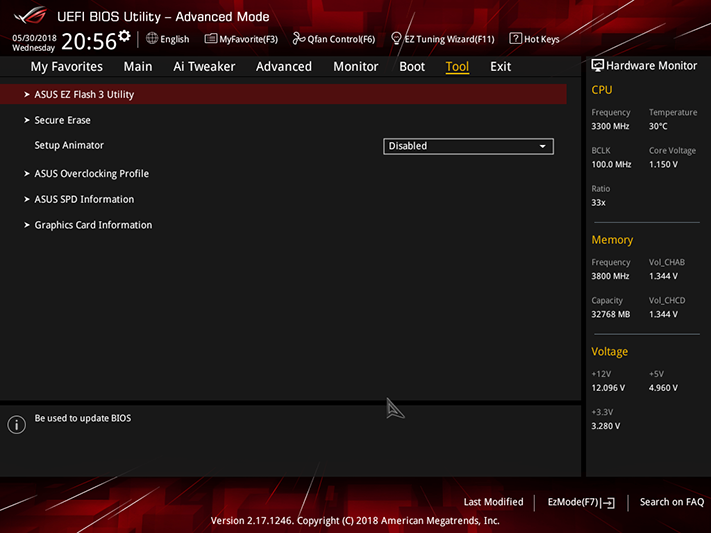



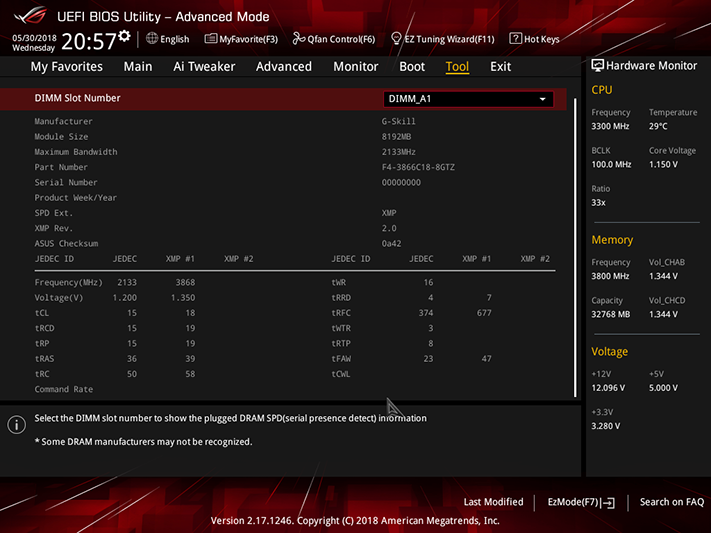
You can upgrade firmware from the firmware GUI by accessing Asus EZ Flash 3 from the Tools menu. Secure Erase didn’t function with our NVMe drive and we didn't test it on a SATA drive. You can save eight complete firmware settings as profiles and/or import/export to/from a USB drive from the Asus Overclocking Profile menu, and the SPD Information tab brings up a short page of memory module readings.
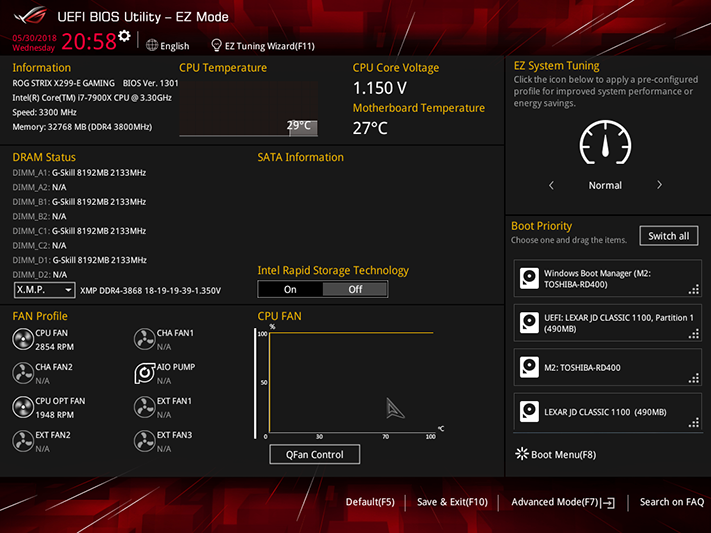
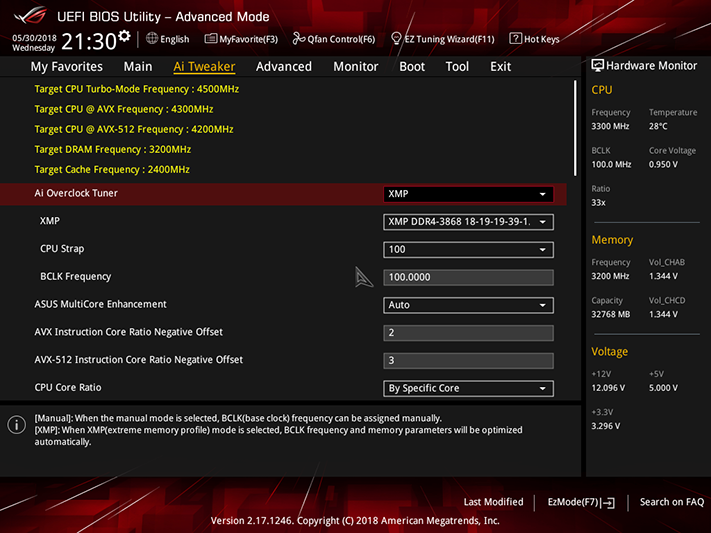

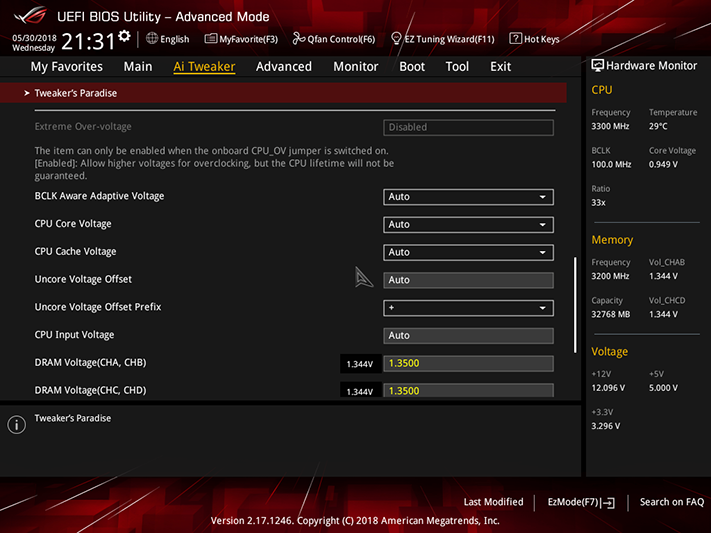
Users confused by too many options can enter EZ Mode using the keyboard’s F7 function, which reduces options to boot order, XMP activation, fan profiles and two levels of automatic overclocking. Entering Advanced Mode shows what those overclocking apps produced, with Fast Tuning pushing our CPU to 4.5 GHz non-AVX, 4.3GHz AVX and 4.2 GHz AVX 512 loads at 1.17 to 1.27V. The Extreme Tuning option increased AVX and AVX 512 loads to 4.4 and 4.3 GHz, respectively, at 1.20 to 1.27V. Both tuning algorithms selected DDR4-3200 at 1.35v for our memory.
MORE: Best Motherboards
MORE: How To Choose A Motherboard
MORE: All Motherboard Content
-
newsonline5000000 Actually we need Three x8 Slots not for three ways SLI , but for 2 x SLI AND an x8 Card (NVME cards or Raid cards)Reply
you need to stop focusing on SLI and think about more cards to add. With today GPU power , we dont need more than Two GPUs of High end cards. -
derekullo Reply21206294 said:Actually we need Three x8 Slots not for three ways SLI , but for 2 x SLI AND an x8 Card (NVME cards or Raid cards)
you need to stop focusing on SLI and think about more cards to add. With today GPU power , we dont need more than Two GPUs of High end cards.
To be fair, Gaming is in the name of the "Asus ROG Strix X299-E Gaming" in regards to SLI.
If you wanted to install a raid or NVME card in this motherboard you very well could.
But this isn't a workstation motherboard and isn't marketed as such.
For your needs you would be much better suited to the ASUS ROG ZENITH EXTREME which supports 4 pci-e slots in a x16/x8/x16/x8 configuration, ECC ram, 3 - m.2 drives and a Threadripper cpu to make all those lanes possible.
-
Crashman Reply
Right, so you put two cards in the first and second slot and a PCIe x8 NVMe adapter with two M.2 drives on the bottom slot. And then you use a 28-lane CPU and find that only 1 of your drives is seen, and only in x1 mode. Same complaint then?21206294 said:Actually we need Three x8 Slots not for three ways SLI , but for 2 x SLI AND an x8 Card (NVME cards or Raid cards)
you need to stop focusing on SLI and think about more cards to add. With today GPU power , we dont need more than Two GPUs of High end cards.
-
papality only 8 phases on the VRMs on a board that needs the highest end x299 processors to be worthwhile? whatReply -
Crashman Reply
8 60's is worth 16 30's? Putting memory on both sides of the processor doesn't leave a great deal of room for extra power components, companies have almost universally went with higher ampacity components for there X299 models instead.21208236 said:only 8 phases on the VRMs on a board that needs the highest end x299 processors to be worthwhile? what
-
robert.sandru Is anyone seriously considering X299 for gaming?Reply
I mean it's a ROG board but as a platform the X299 is pressured on both performance and cost by better Intel and AMD solutions... -
newsonline5000000 Reply21206736 said:
Right, so you put two cards in the first and second slot and a PCIe x8 NVMe adapter with two M.2 drives on the bottom slot. And then you use a 28-lane CPU and find that only 1 of your drives is seen, and only in x1 mode. Same complaint then?21206294 said:Actually we need Three x8 Slots not for three ways SLI , but for 2 x SLI AND an x8 Card (NVME cards or Raid cards)
you need to stop focusing on SLI and think about more cards to add. With today GPU power , we dont need more than Two GPUs of High end cards.
Why not see it if the bios is designed to see the split lanes between three slots ? I dont get your x1 mode at all , and I dont get it why only one SSD will be shown ..
-
Crashman Reply21211737 said:21206736 said:
Right, so you put two cards in the first and second slot and a PCIe x8 NVMe adapter with two M.2 drives on the bottom slot. And then you use a 28-lane CPU and find that only 1 of your drives is seen, and only in x1 mode. Same complaint then?21206294 said:Actually we need Three x8 Slots not for three ways SLI , but for 2 x SLI AND an x8 Card (NVME cards or Raid cards)
you need to stop focusing on SLI and think about more cards to add. With today GPU power , we dont need more than Two GPUs of High end cards.
Why not see it if the bios is designed to see the split lanes between three slots ? I dont get your x1 mode at all , and I dont get it why only one SSD will be shown ..
Per Asus, PCIe x16 slot configuration is:
44-lane CPU: x16/x16/x8
28-lane CPU: x16/x8/x1
16-lane CPU: x16/x0/x1, x8/x8/x1
So there's your x1. Now if you're running a passive x8 adapter card, the first four lanes go to the first M.2 drive, the second four lanes go to the second M.2 drive. But, there's only one lane on the third slot with a 28-lane CPU, so if you put your passive adapter there, the first M.2 drive gets one lane and the second M.2 drive gets no lanes.
